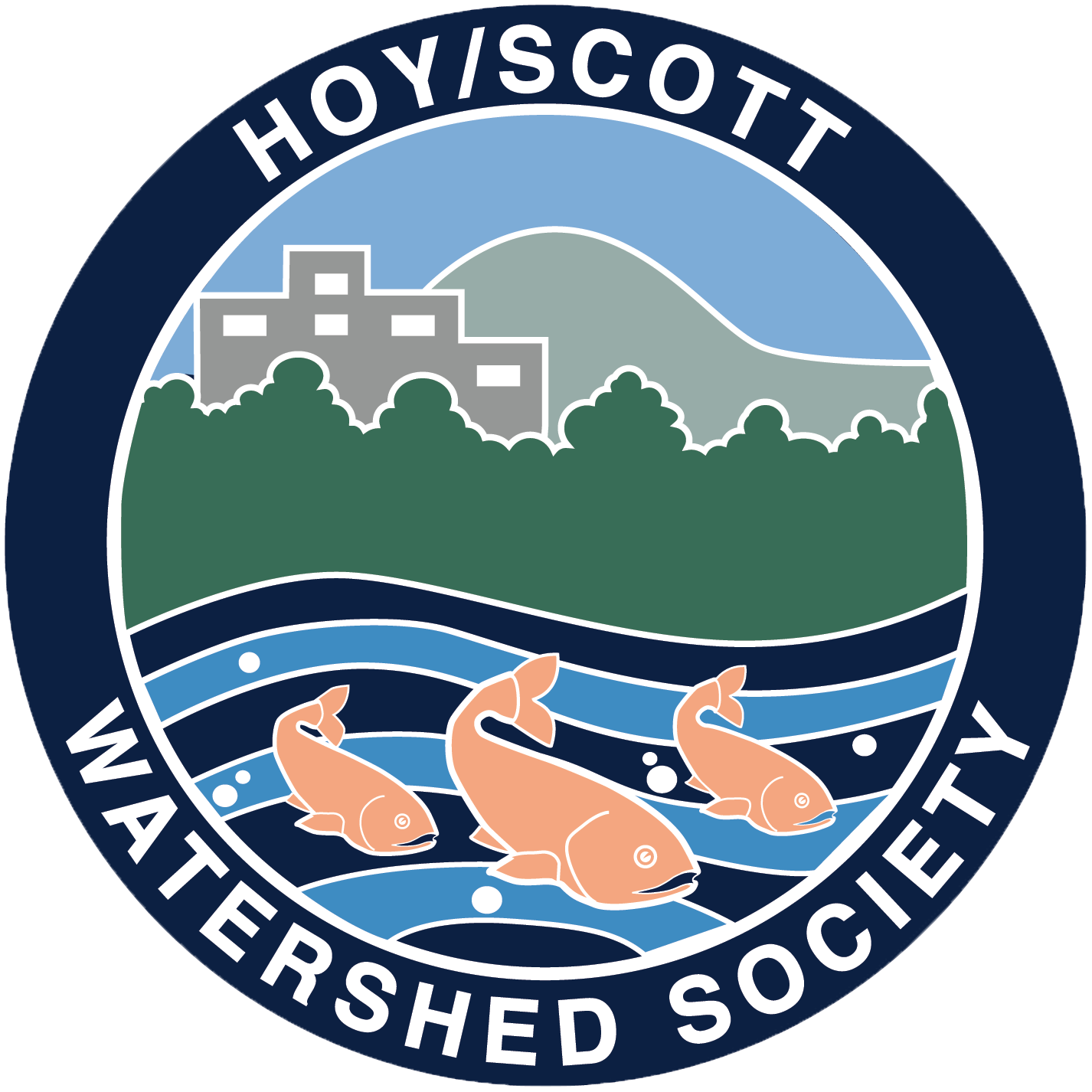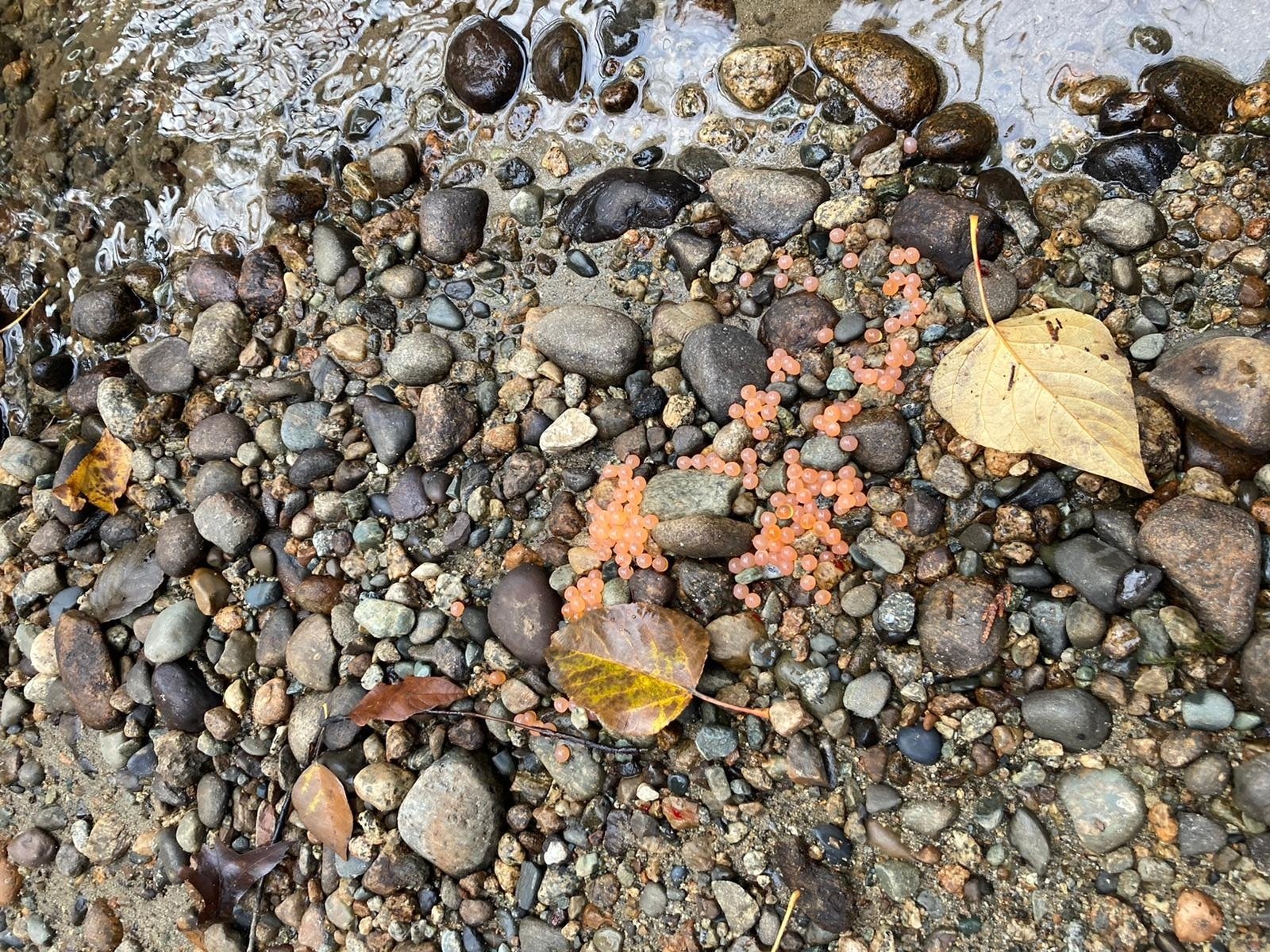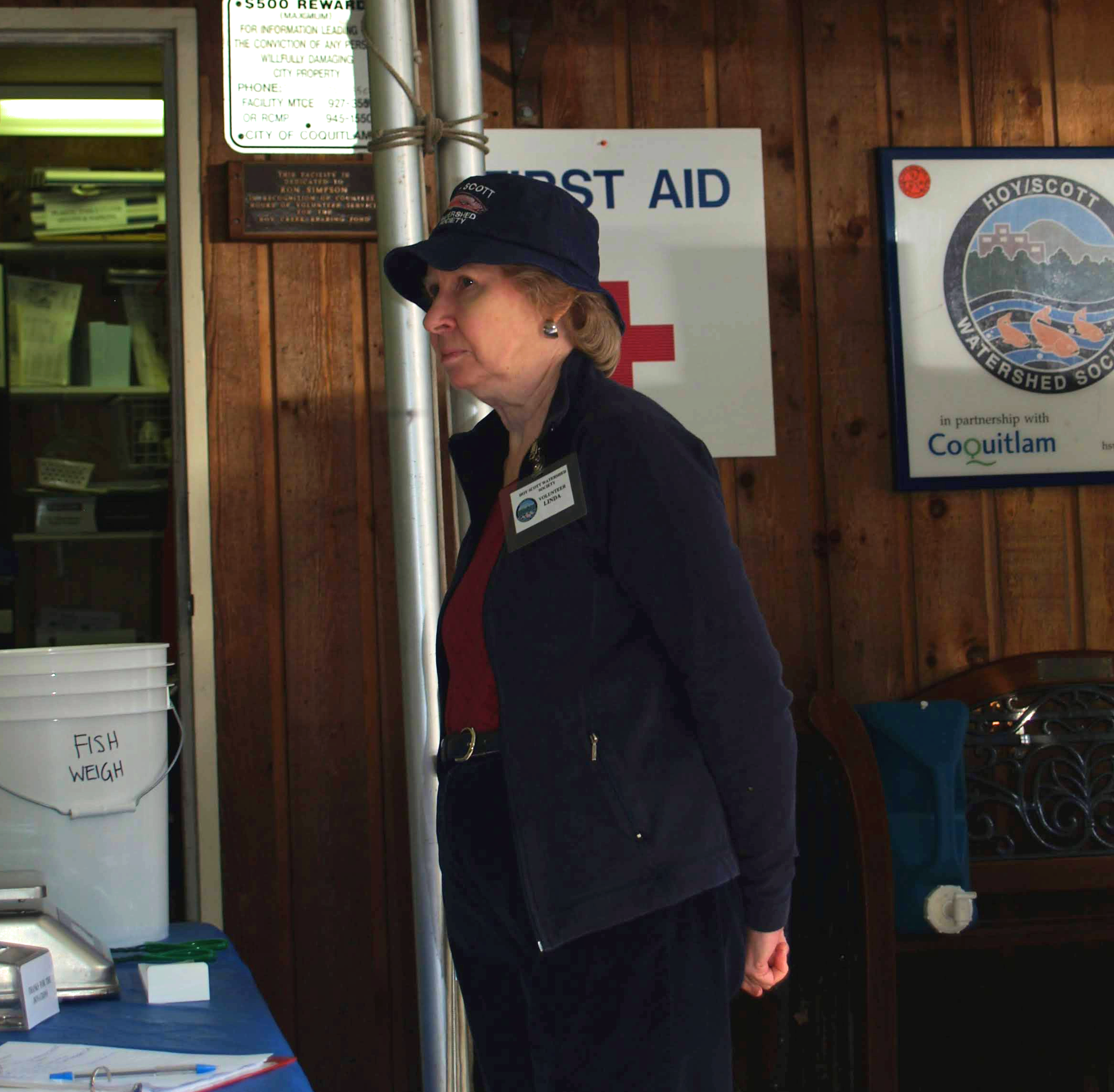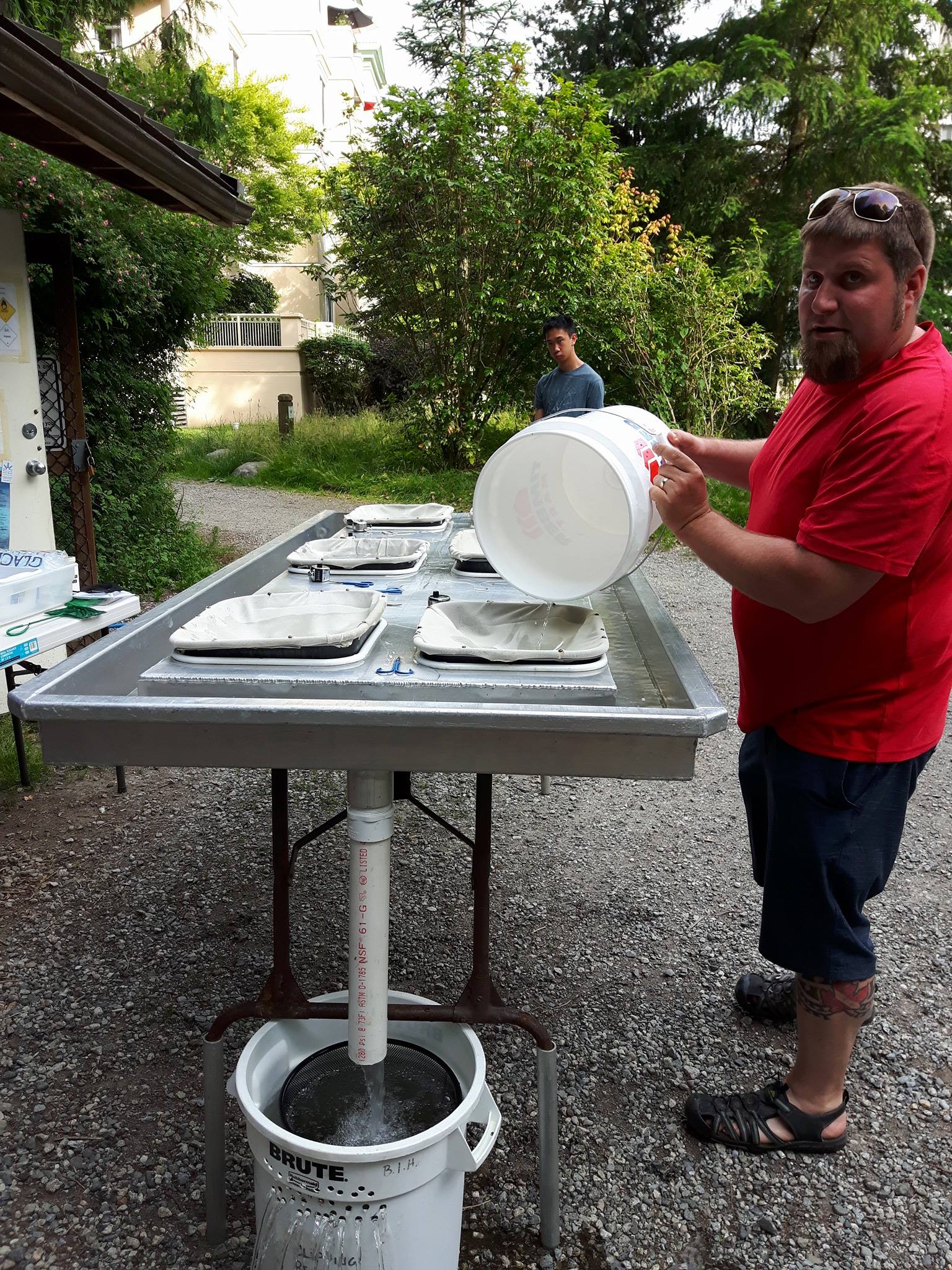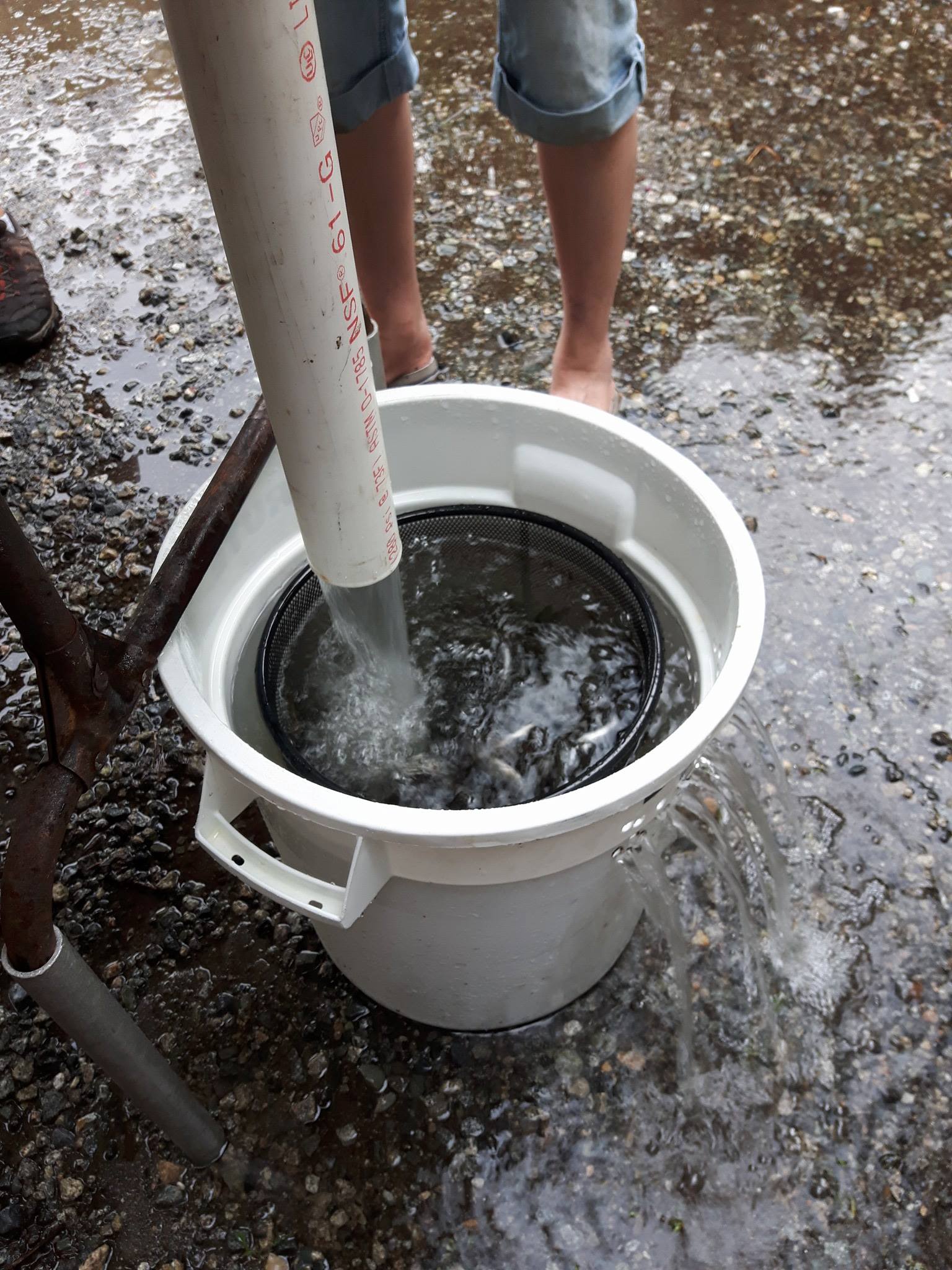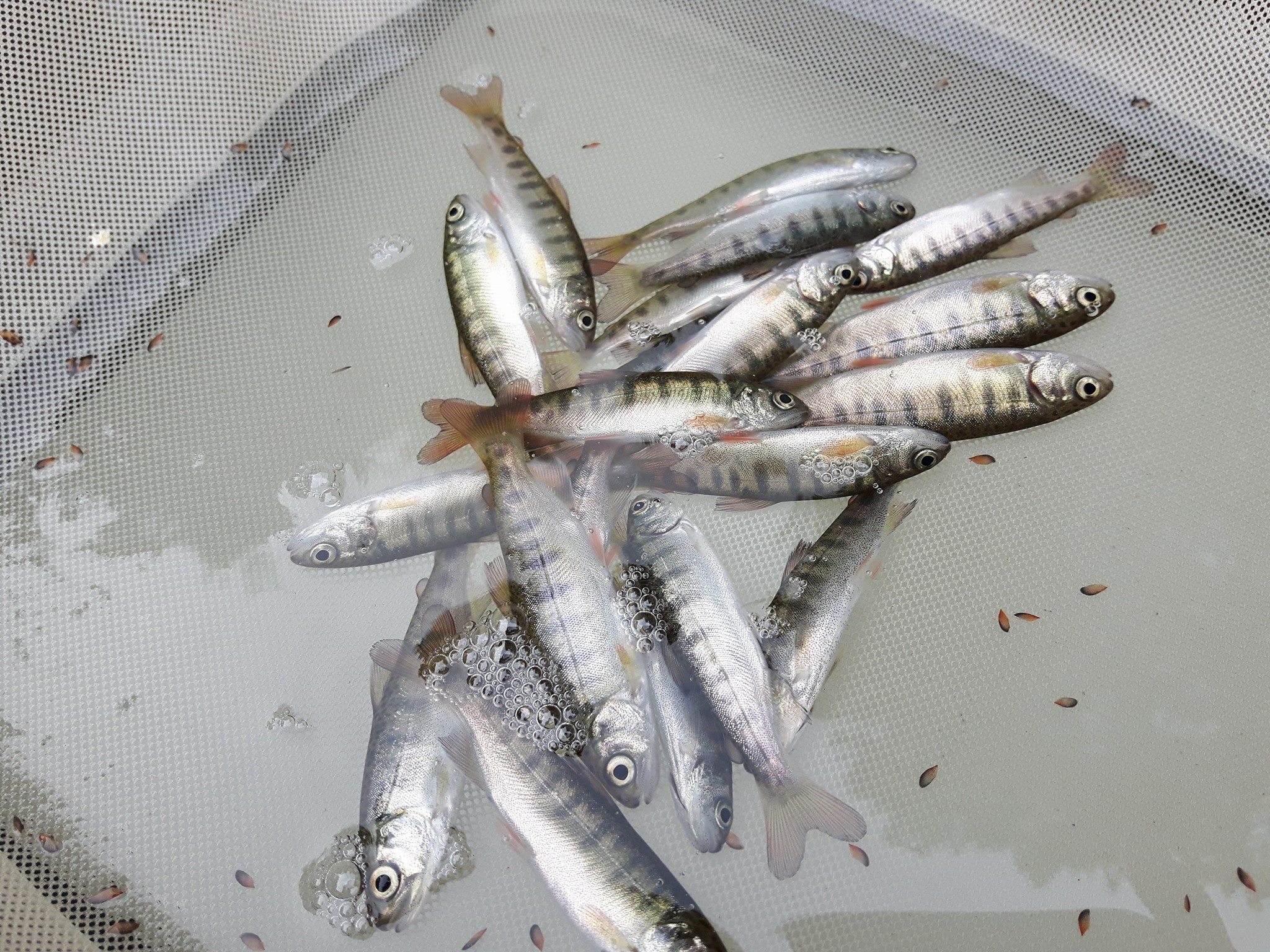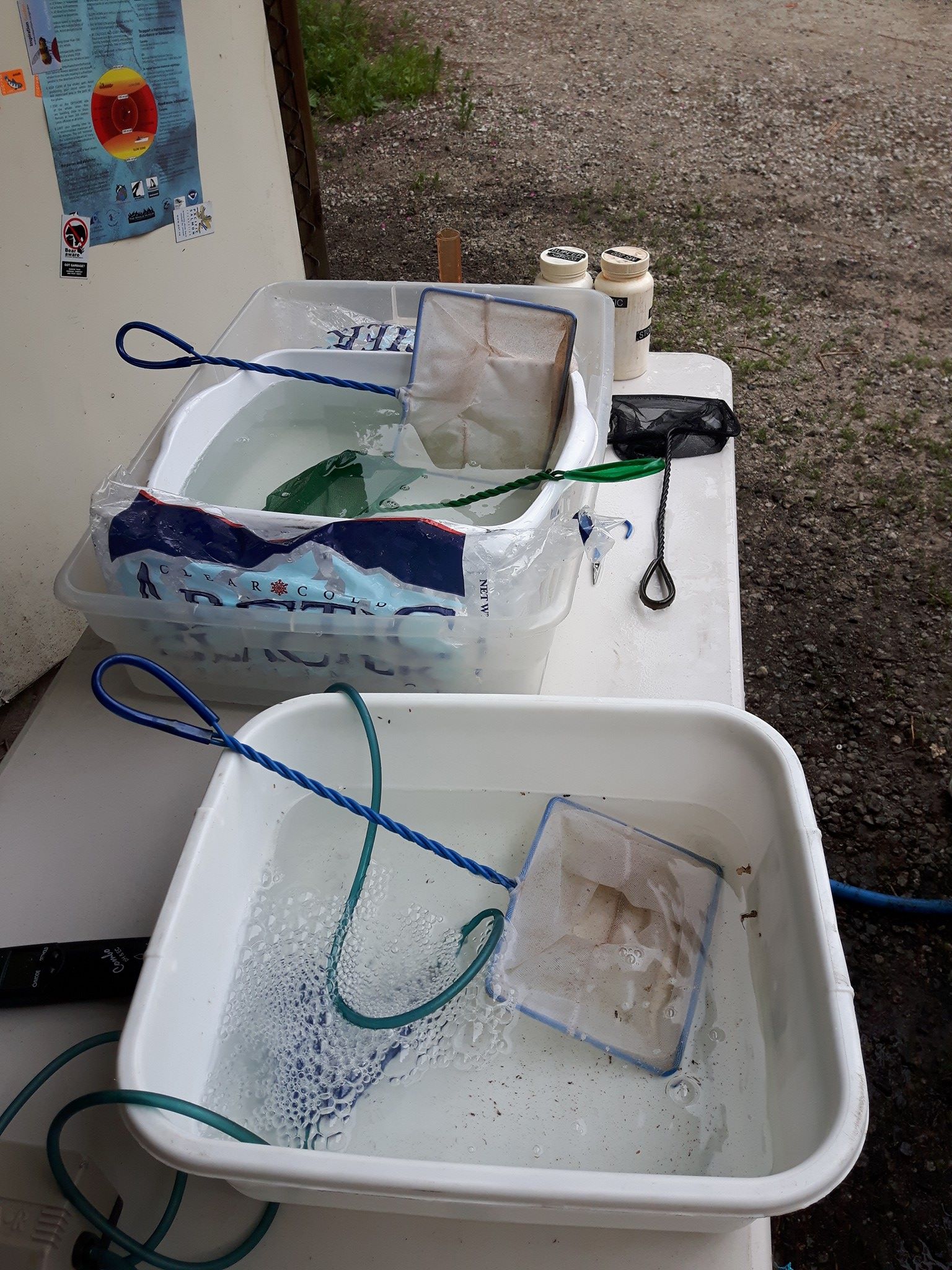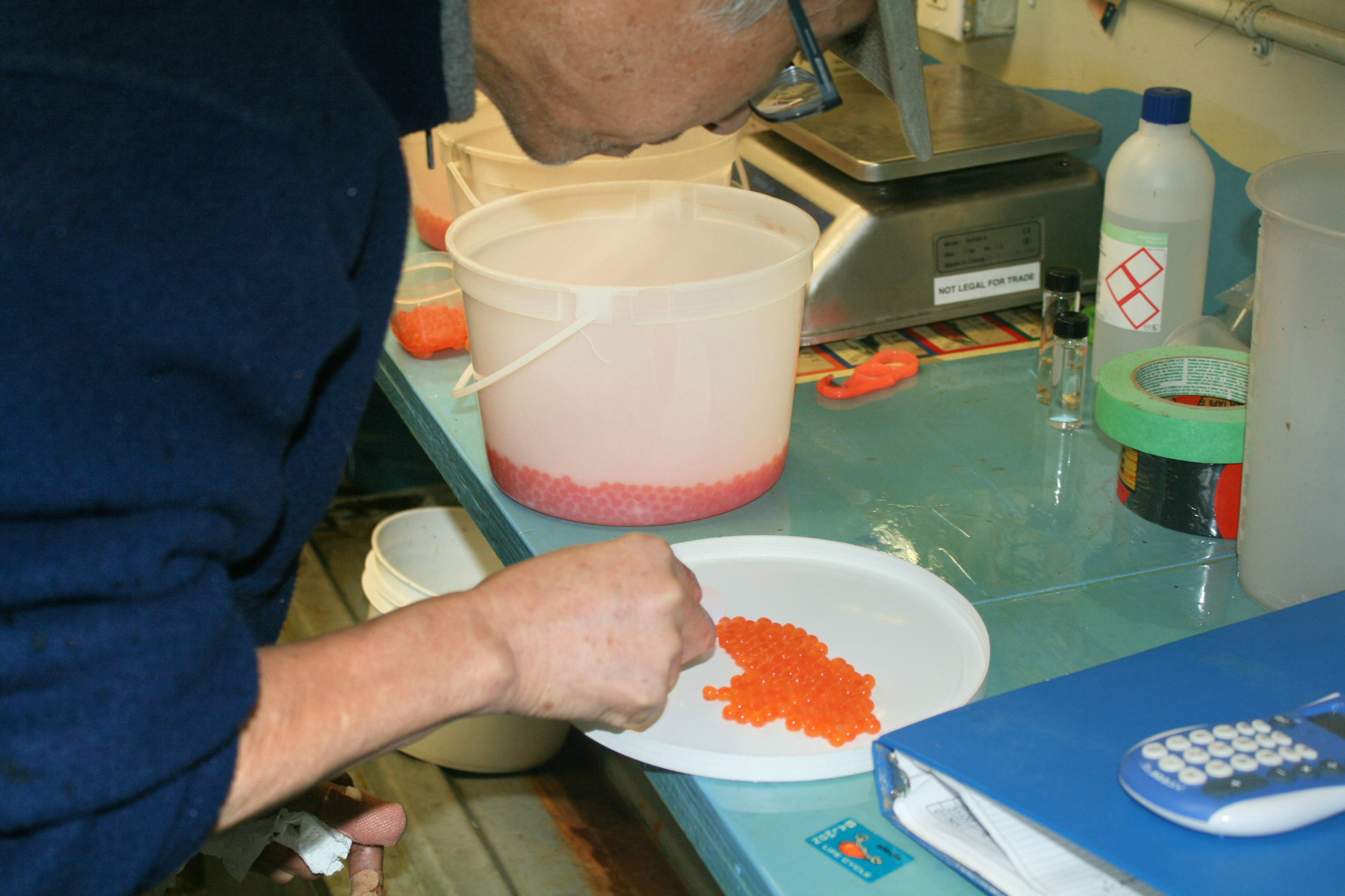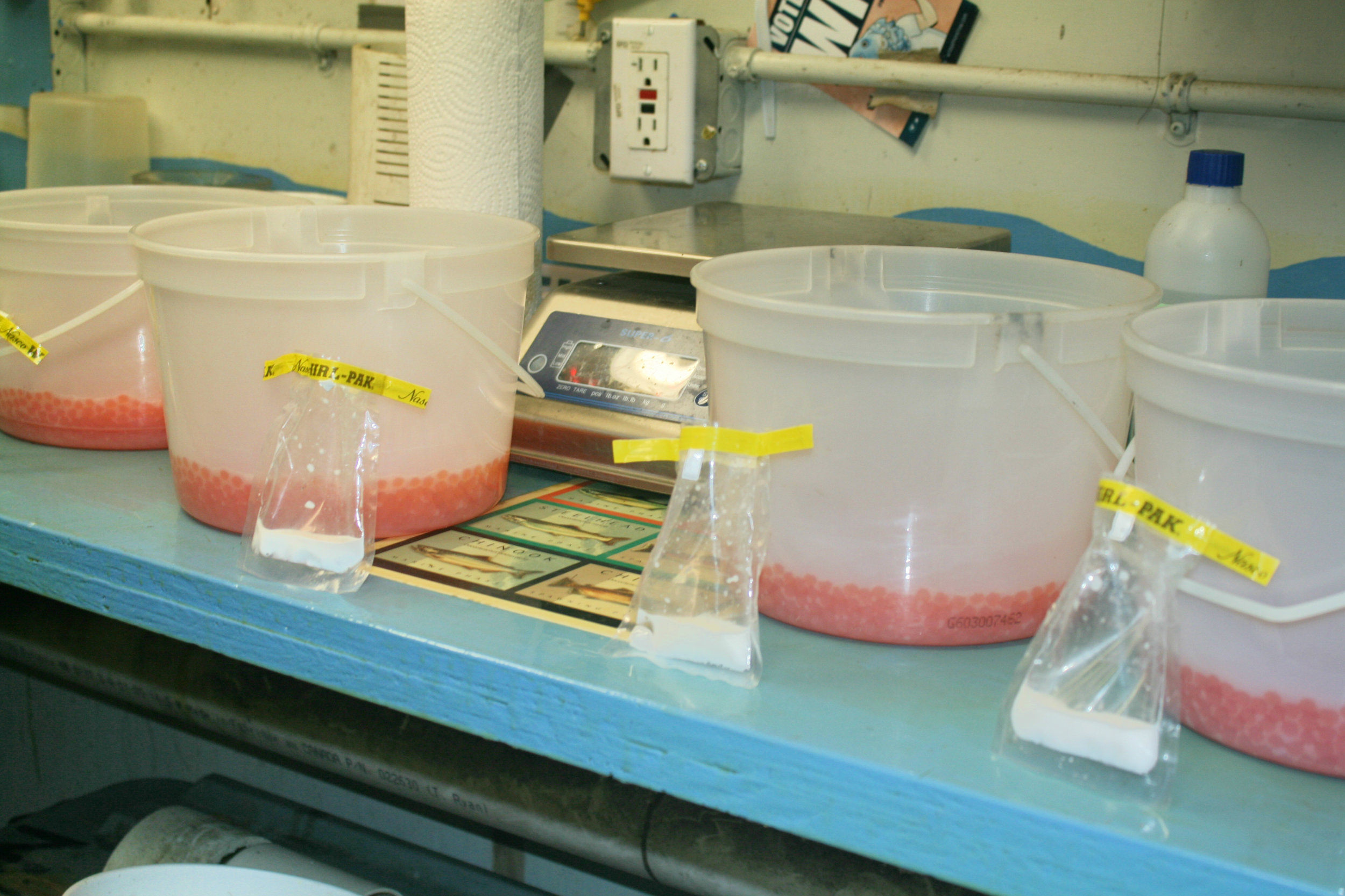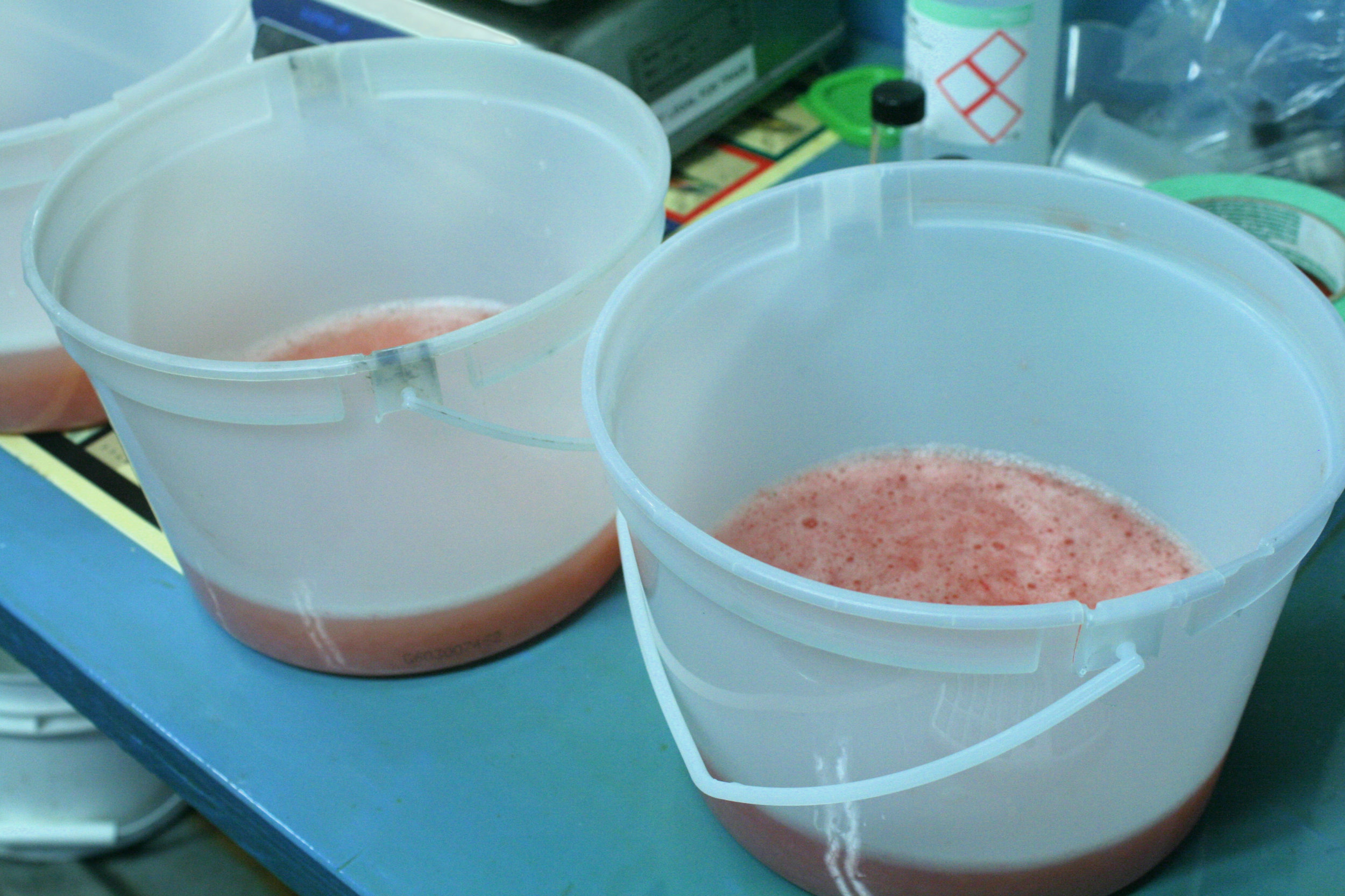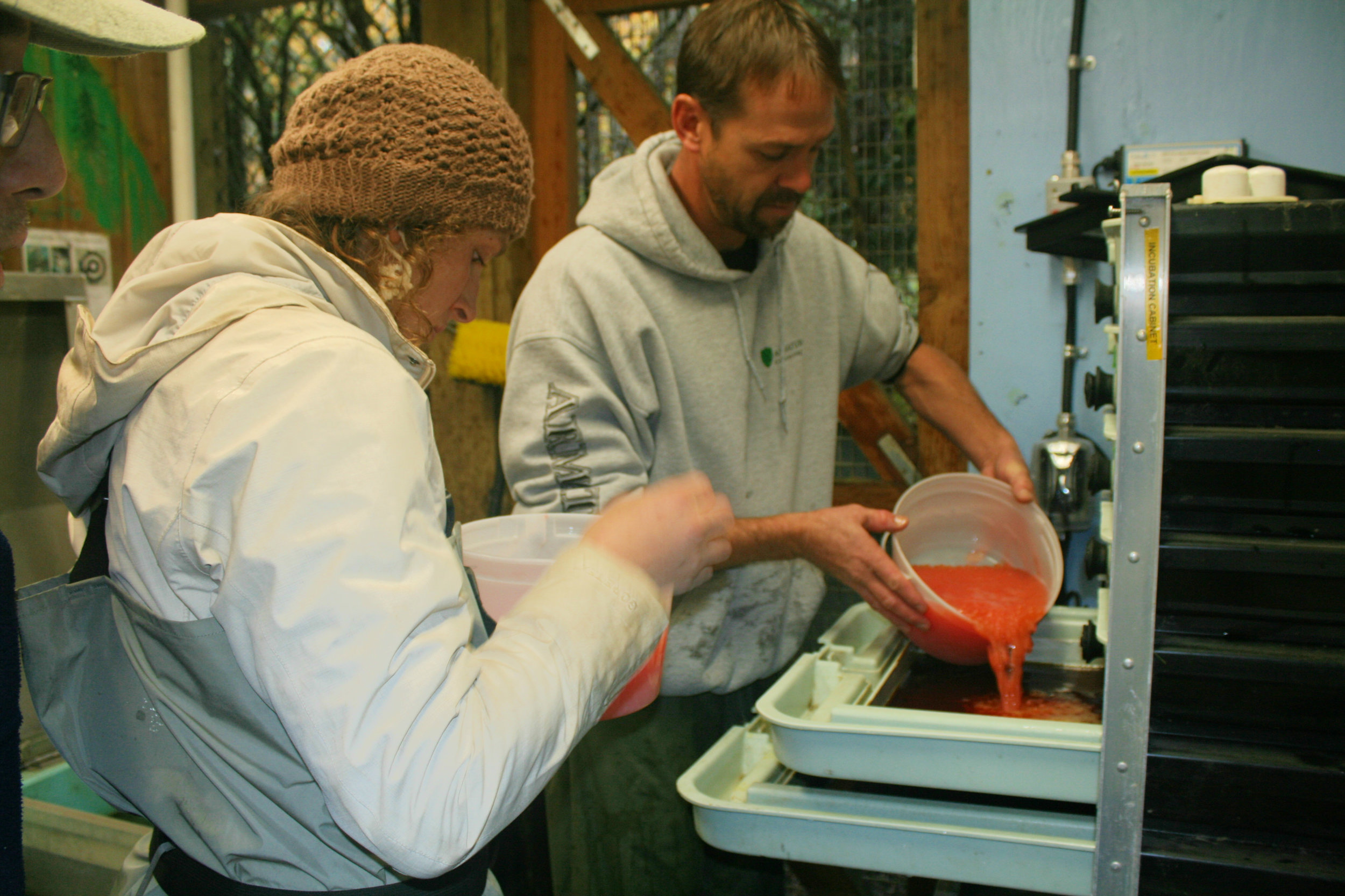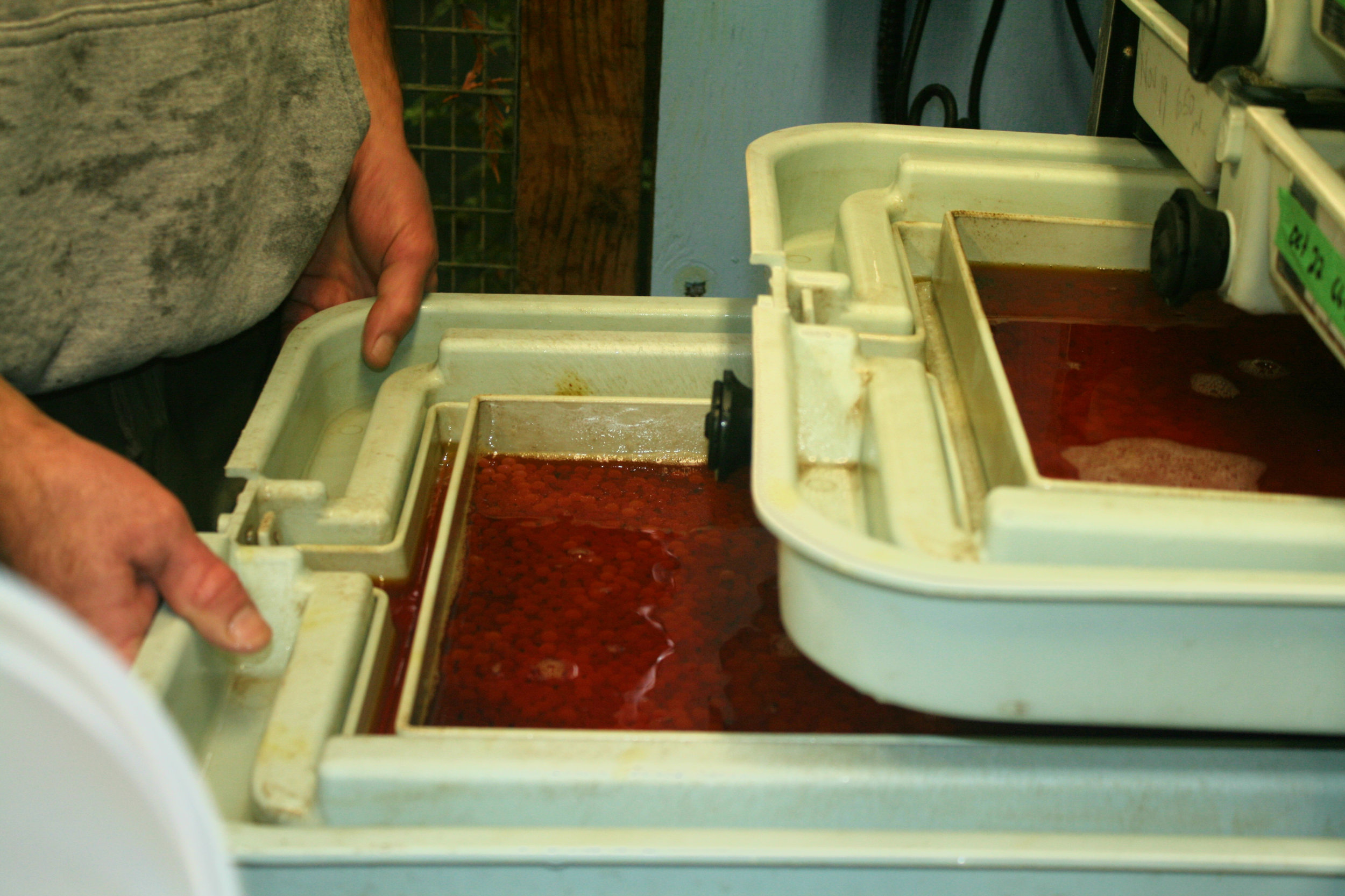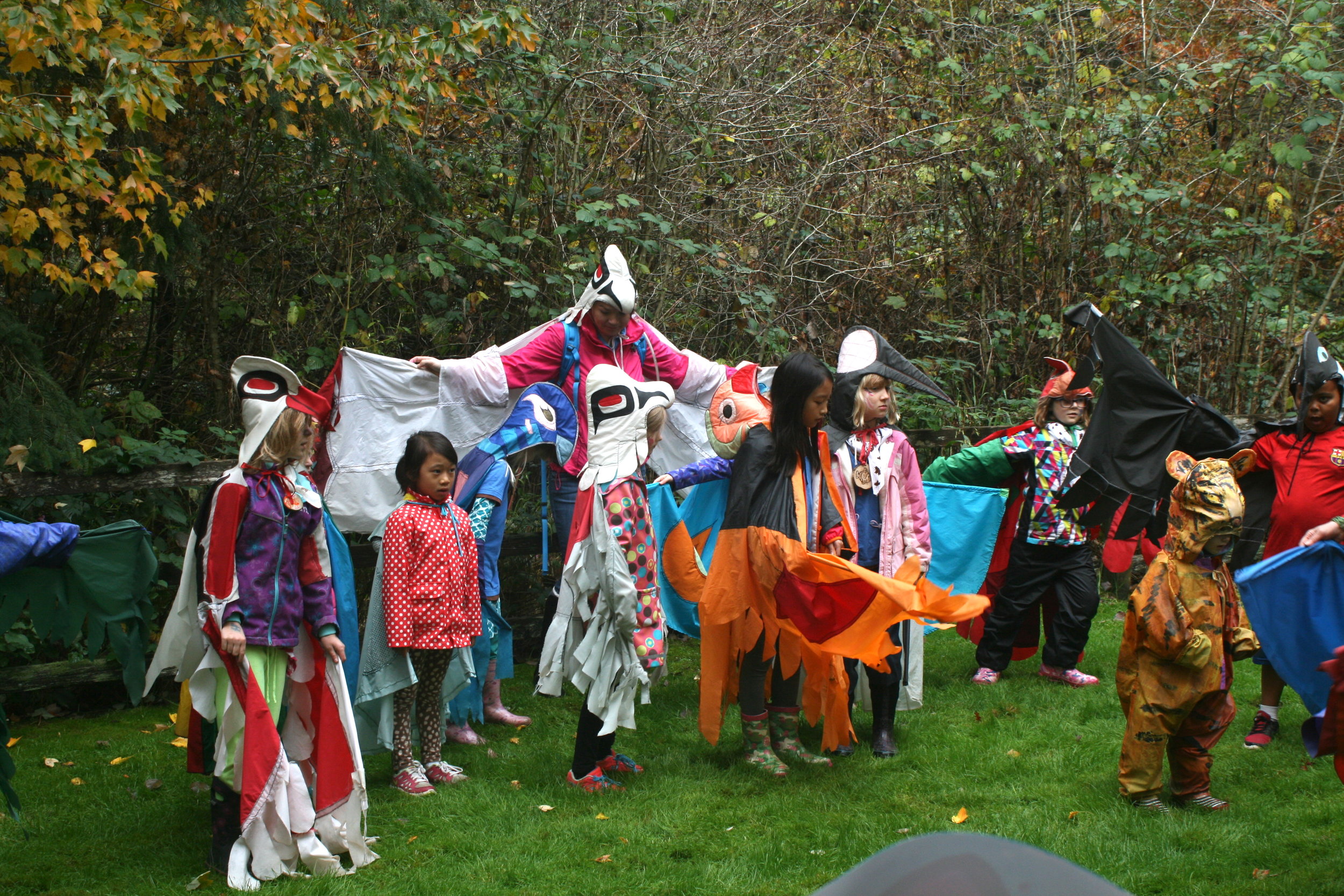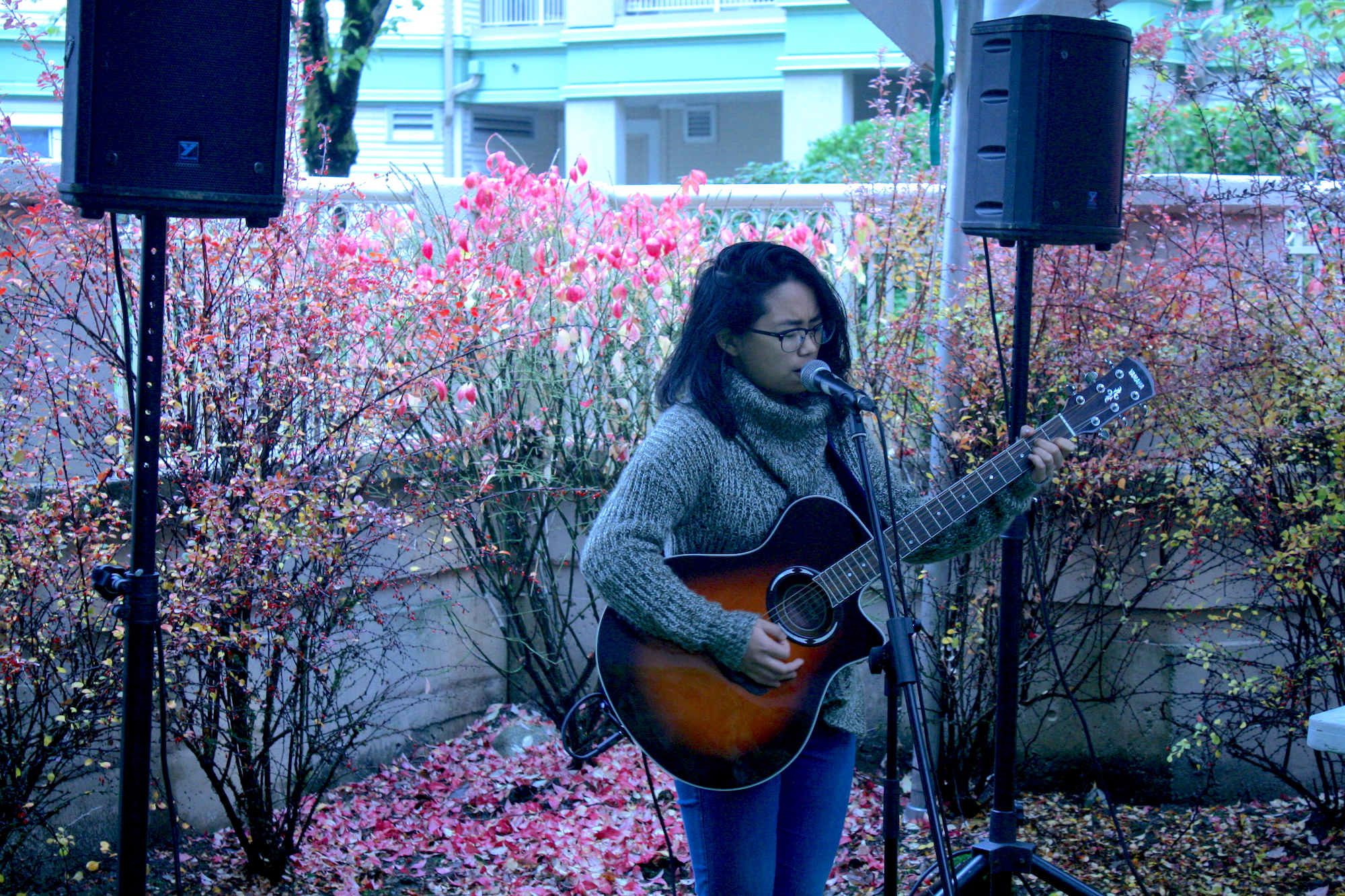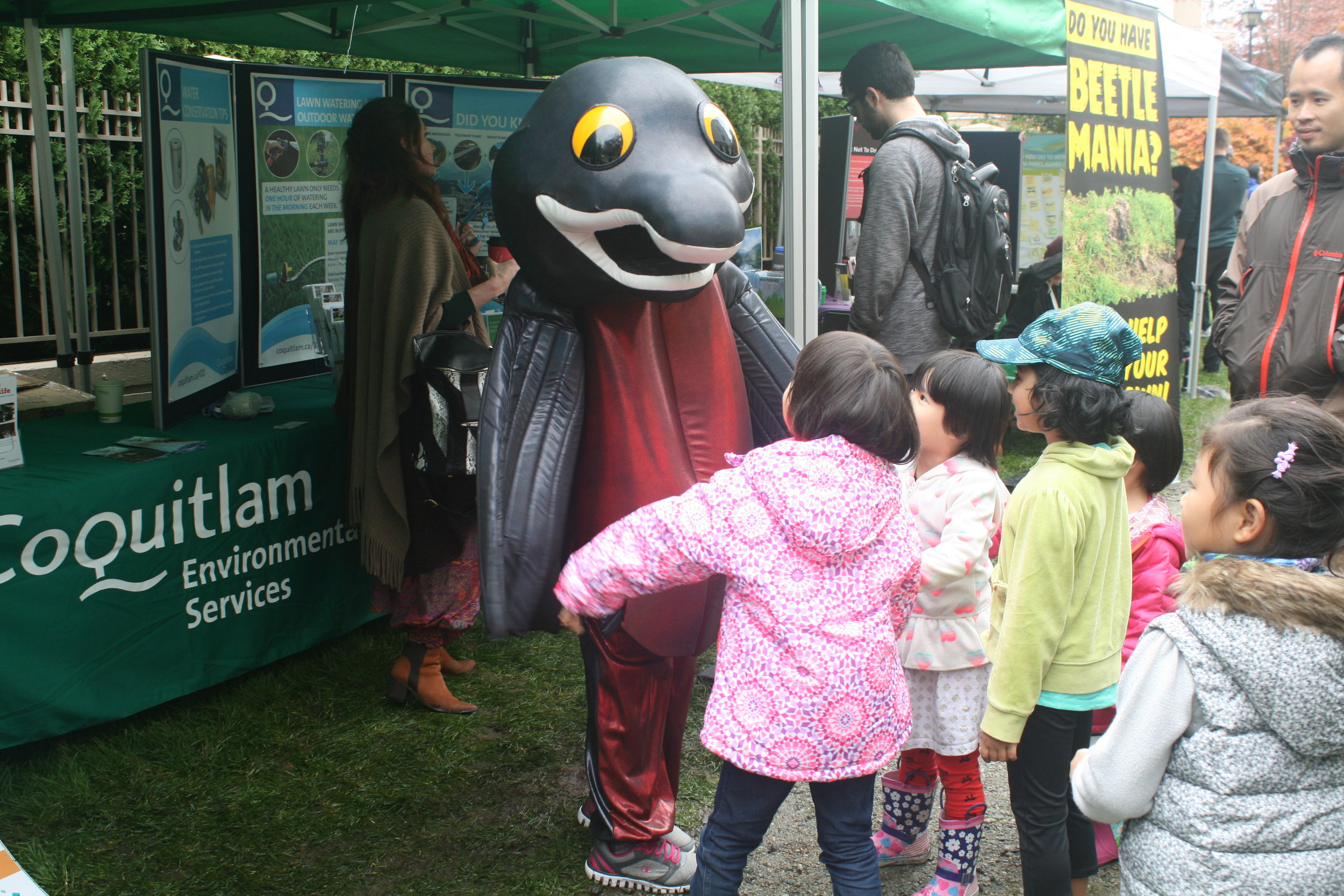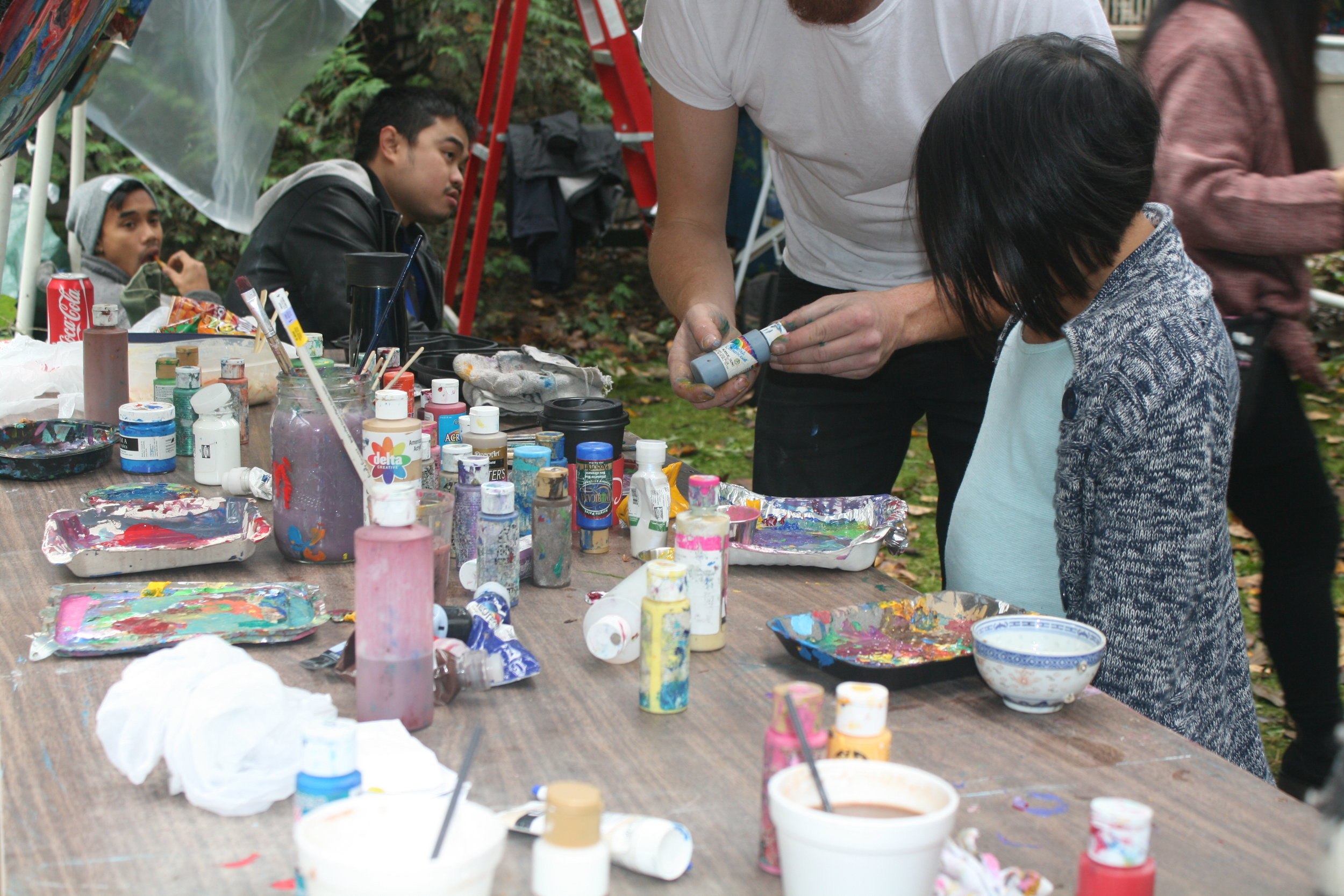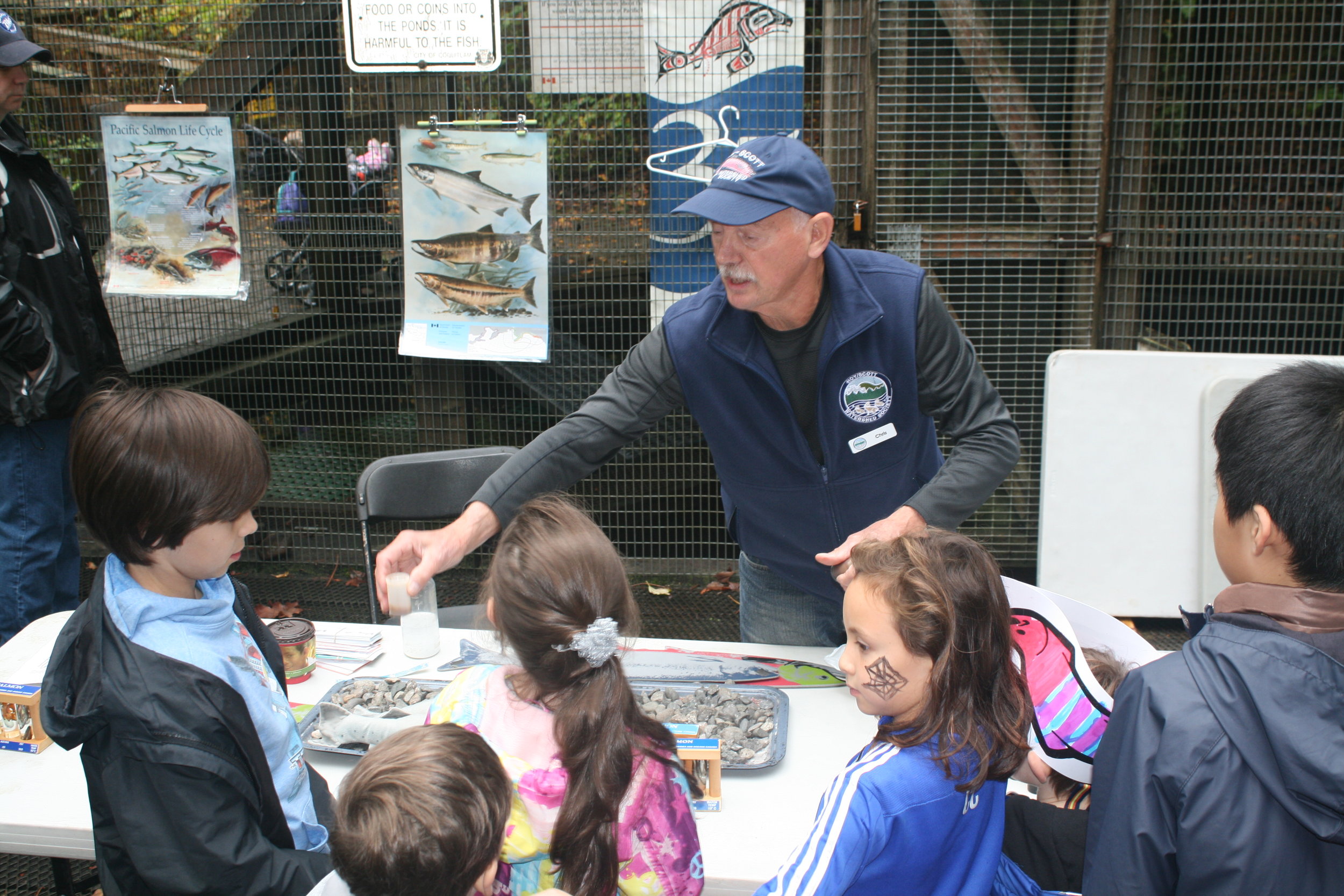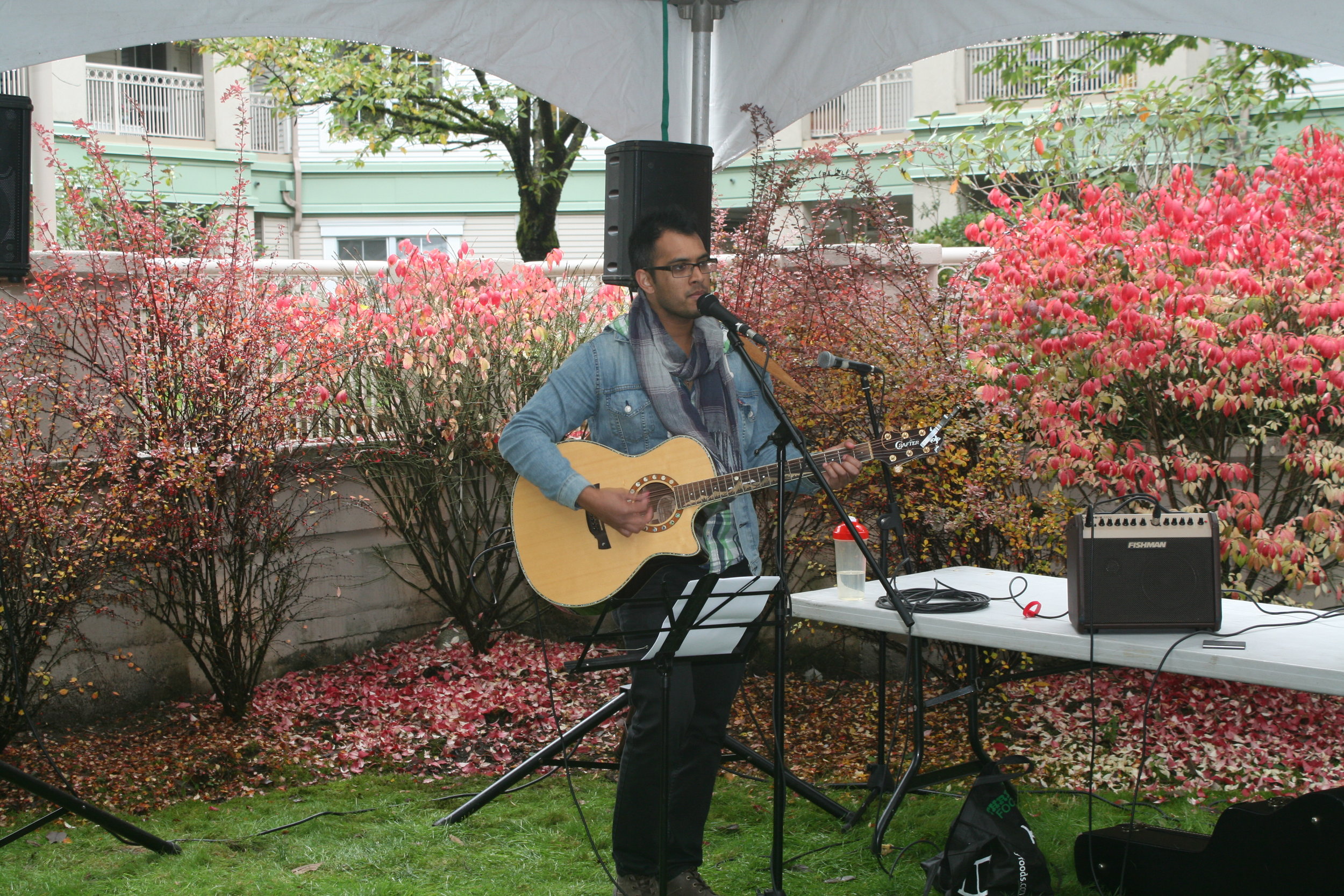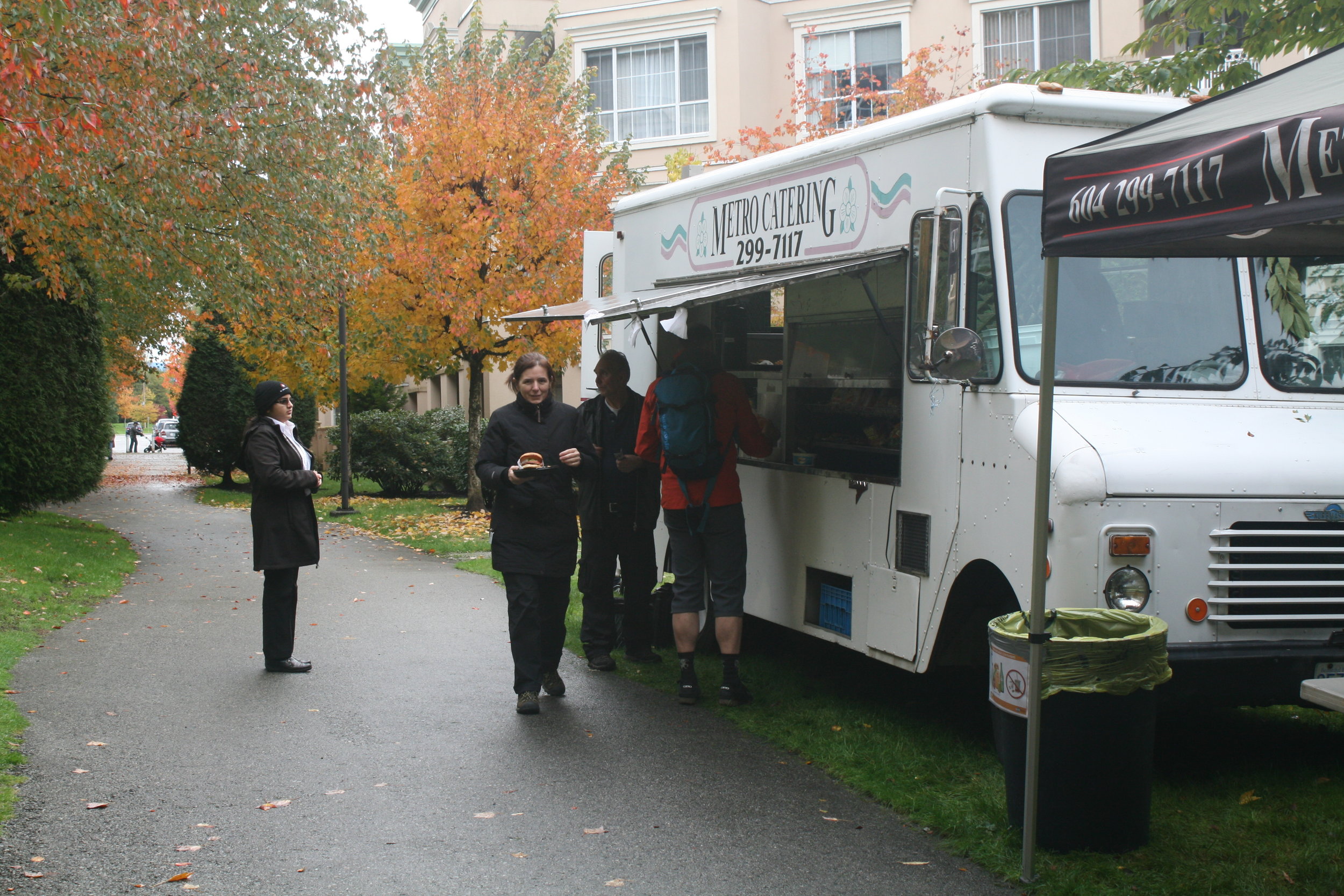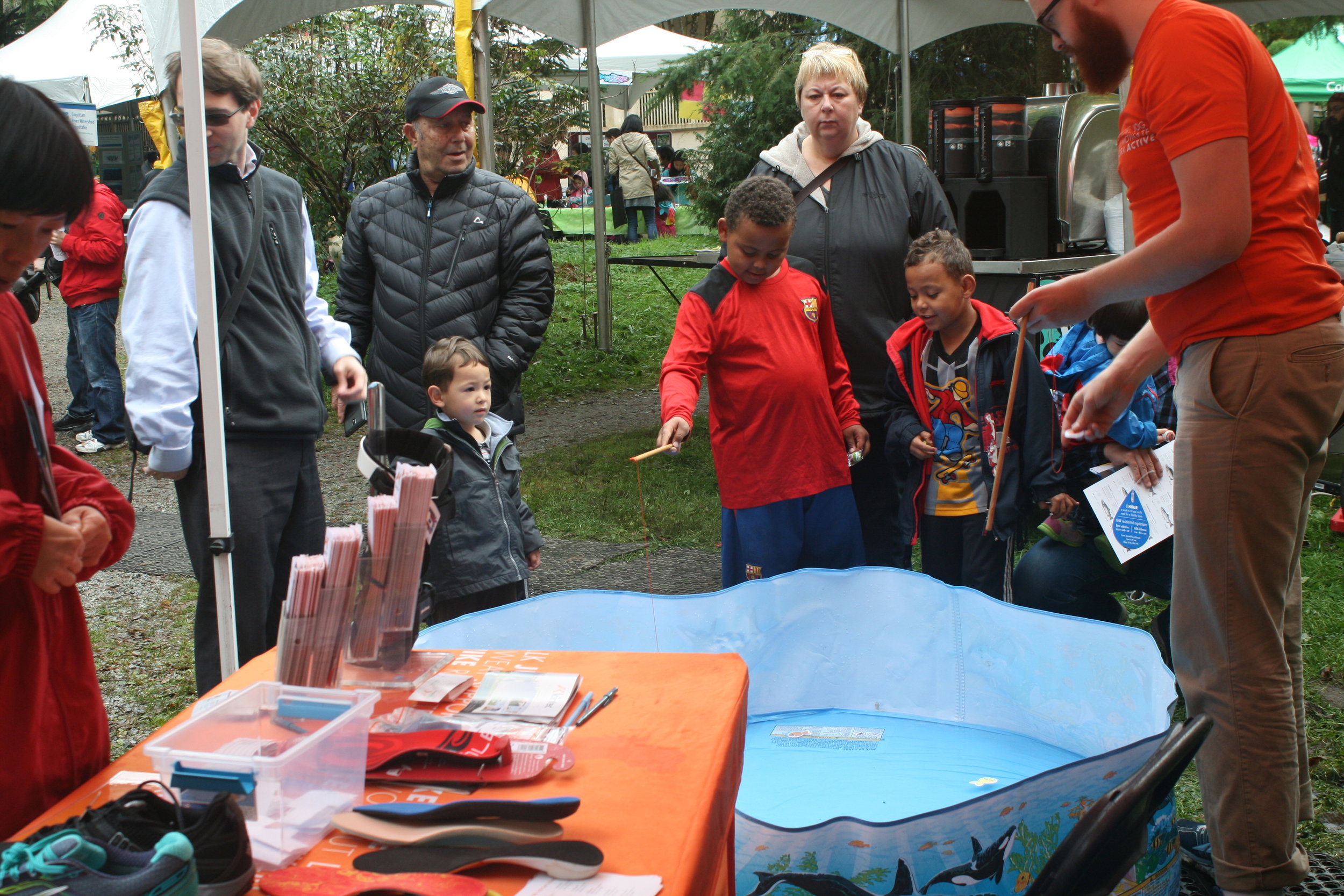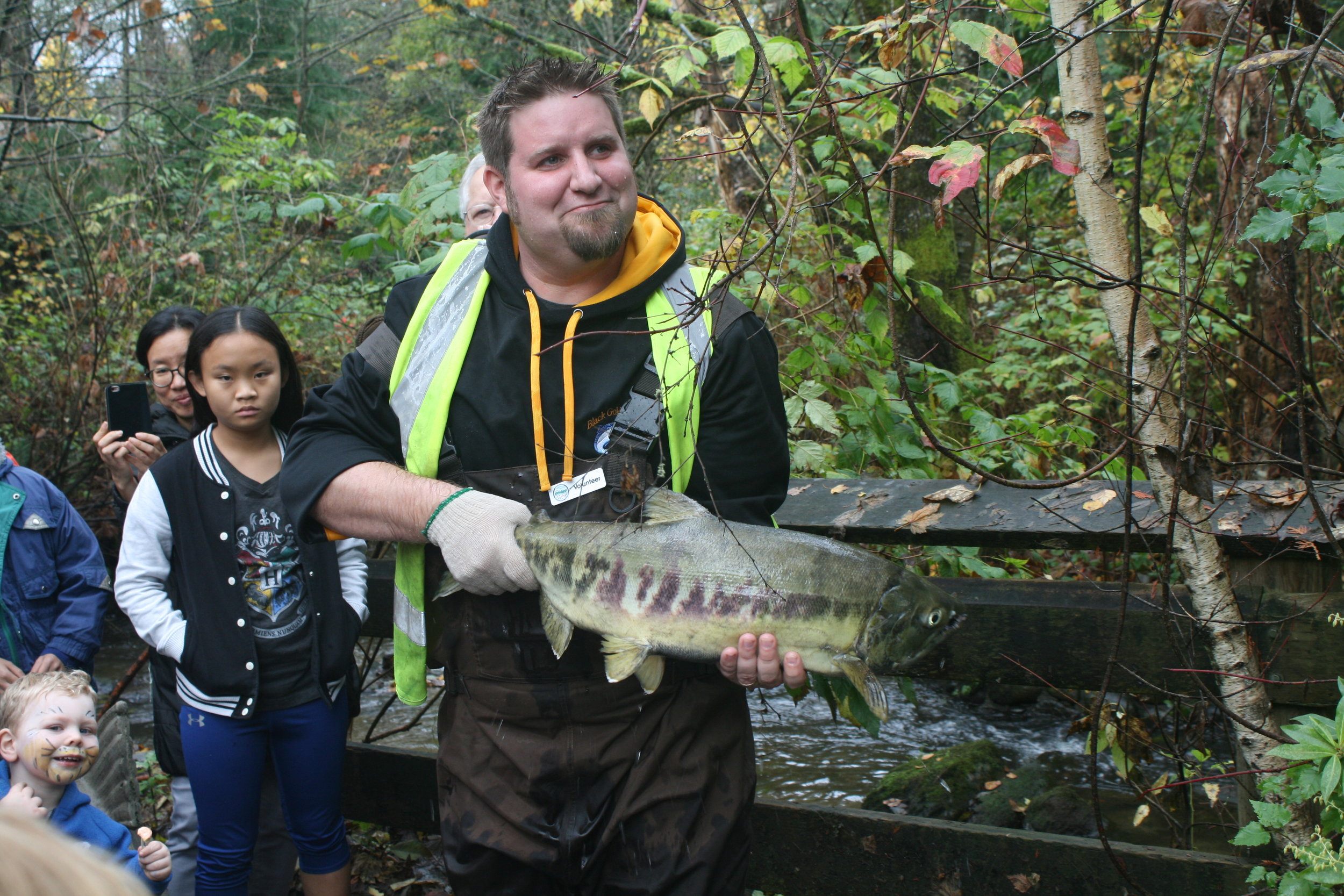Hoy/Scott Watershed Society director, Rodney Lee led our spawner survey for 2021. Assisting him this year was Kyle Uno, Krista Englund and Anne Woosnam.
Spawner surveys are a basic form of stock assessment where the data can be used to gauge the health of salmon returns. In short, we walk the creek and count live and dead salmon (by species) to get a sense of the number of returning fish. Data is submitted to the Streamkeeper’s database as well as to the Department of Fisheries and Oceans Canada (DFO).
Participants walk in chest waders in and around the stream including stepping over fallen trees, walking on in-stream rocks and muddy banks, and crouching under overhanging tree branches to identify salmon species targeting chum and coho but occasionally other species (chinook, pink) may have been seen.
The weekly survey area was the stretch of Hoy Creek from the Johnson St. pool (between Glen and Guildford) to Hoy Creek Hatchery and statistics were taken from Oct. 13 and Dec. 29.
In some cases, females don’t lay all of their eggs.
Here are the survey details:
Total Survey Days: 13
Peak live date chum: Nov. 8 (146)
Peak live date coho: Nov. 21 (53)
Peak live date chinook: Oct. 24 (1)
Total dead recovered (across all surveys):
Chum: 195
Coho: 38 (77% were wild - unmarked)
Chinook: 2
Otoliths (ear bones) removed from the head of the salmon (2 small triangular shaped bones on the back of the hand). Volunteers were shown a demonstration of how this is conducted. Although not used with chum, otoliths are removed for other salmon stocks as a measure of age determination and/or hatchery thermal marking fish.
